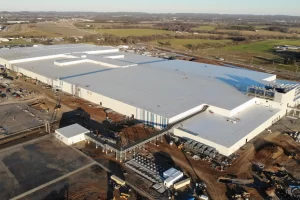Key Points
- 🚗 Tesla issued an over-the-air (OTA) software update to approximately 55,000 Model X vehicles in response to an NHTSA recall related to brake fluid issues.
- 🚨 The NHTSA recalled 54,676 Tesla Model X cars built between 2021 and 2023 due to a controller malfunction that failed to detect low brake fluid and issue a warning.
- 📡 Tesla deployed a free OTA update, labeled as a “recall,” to address the brake fluid controller issue and improve braking performance.
- ⚠️ The NHTSA warned that the controller failure could potentially impact braking performance and increase the risk of collisions.
- 📅 Tesla is unaware of any accidents, injuries, or fatalities resulting from this malfunction as of October 10, 2023.
- 🔧 Tesla identified and fixed the issue in collaboration with the Brakes Integration Team, and Tesla stores and service centers will be notified.
- 📃 Despite the use of the term “recall,” Tesla often addresses such issues with over-the-air software updates, a practice sometimes criticized as misleading.
- 🗣️ CEO Elon Musk has previously criticized the use of the word “recall” in cases where physical maintenance is not required.
Tesla rolled out an over-the-air (OTA) software update to almost 55,000 Model X units this week, due to an issue in which a vehicle controller malfunctioned and the car failed to warn drivers of low brake fluid.
The National Highway Traffic Safety Administration (NHTSA) announced a recall on 54,676 Tesla Model X vehicles on Tuesday built between 2021 and 2023, due to vehicle controllers failing to detect low brake fluid and subsequently not displaying a warning light (via Reuters). Tesla deployed a free OTA update to the vehicles to fix the issue.
In the recall document, the NHTSA says the controller failure “may impact braking performance and may increase the risk of a collision.” As for the cause of the issue, the document states that the “vehicle controller’s set threshold range for the sensor may not be set to the correct range at low brake fluid levels.”
As of October 10, Tesla says it isn’t aware of any accidents, injuries or fatalities as a result of the malfunction. The automaker discovered the problem in September and worked with the Brakes Integration Team to identify and fix the set threshold range.
Tesla stores and service centers will be notified, though Tesla software update 2023.32.7 or later will fix the setting, according to the document.
You can read the NHTSA’s full recall notice here, complete with a chronology of Tesla’s discovery and response to the malfunction.
Some have criticized the use of the word “recall” in cases where Tesla or other automakers don’t need to perform any physical maintenance to fix a given problem. CEO Elon Musk criticized the use of the word recall in February, and he called the term “outdated and inaccurate” regarding these kinds of cases last fall.
In the past, Tesla has often fixed so-called recalls by deploying an OTA update to the involved vehicles, which the cars then download and install — and often well before the NHTSA can officially send notice letters to them.
Involved Model X owners will still receive letters regarding the brake fluid controller recall notice, which the agency says will be mailed out by December 12. The related recall number is SB-23-00-005.





